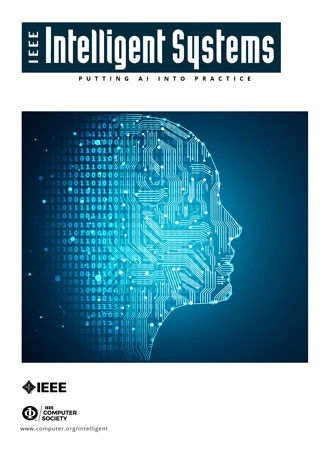Neurosymbolic Value-Inspired Artificial Intelligence (Why, What, and How)
IF 6.1
3区 计算机科学
Q1 COMPUTER SCIENCE, ARTIFICIAL INTELLIGENCE
引用次数: 0
Abstract
The rapid progression of artificial intelligence (AI) systems, facilitated by the advent of large language models (LLMs), has resulted in their widespread application to provide human assistance across diverse industries. This trend has sparked significant discourse centered around the ever-increasing need for LLM-based AI systems to function among humans as a part of human society. Toward this end, neurosymbolic AI systems are attractive because of their potential to enable and interpretable interfaces for facilitating value-based decision making by leveraging explicit representations of shared values. In this article, we introduce substantial extensions to Kahneman’s System 1 and System 2 framework and propose a neurosymbolic computational framework called value-inspired AI (VAI). It outlines the crucial components essential for the robust and practical implementation of VAI systems, representing and integrating various dimensions of human values. Finally, we further offer insights into the current progress made in this direction and outline potential future directions for the field.受神经符号价值启发的人工智能(为什么、是什么、怎么做)
随着大型语言模型(LLM)的出现,人工智能(AI)系统得到了快速发展,并被广泛应用于各行各业,为人类提供帮助。这一趋势引发了围绕基于 LLM 的人工智能系统作为人类社会的一部分在人类中发挥作用的日益增长的需求的重要讨论。为此,神经符号人工智能系统颇具吸引力,因为它们有可能利用共同价值观的明确表征,为促进基于价值的决策提供可解释的界面。在本文中,我们介绍了对卡尼曼的系统 1 和系统 2 框架的实质性扩展,并提出了一种称为价值启发式人工智能(VAI)的神经符号计算框架。它概述了 VAI 系统稳健实用的重要组成部分,代表并整合了人类价值观的各个层面。最后,我们进一步深入分析了该领域目前取得的进展,并概述了该领域未来的潜在发展方向。
本文章由计算机程序翻译,如有差异,请以英文原文为准。
求助全文
约1分钟内获得全文
求助全文
来源期刊

IEEE Intelligent Systems
工程技术-工程:电子与电气
CiteScore
13.80
自引率
3.10%
发文量
122
审稿时长
1 months
期刊介绍:
IEEE Intelligent Systems serves users, managers, developers, researchers, and purchasers who are interested in intelligent systems and artificial intelligence, with particular emphasis on applications. Typically they are degreed professionals, with backgrounds in engineering, hard science, or business. The publication emphasizes current practice and experience, together with promising new ideas that are likely to be used in the near future. Sample topic areas for feature articles include knowledge-based systems, intelligent software agents, natural-language processing, technologies for knowledge management, machine learning, data mining, adaptive and intelligent robotics, knowledge-intensive processing on the Web, and social issues relevant to intelligent systems. Also encouraged are application features, covering practice at one or more companies or laboratories; full-length product stories (which require refereeing by at least three reviewers); tutorials; surveys; and case studies. Often issues are theme-based and collect articles around a contemporary topic under the auspices of a Guest Editor working with the EIC.
 求助内容:
求助内容: 应助结果提醒方式:
应助结果提醒方式:


